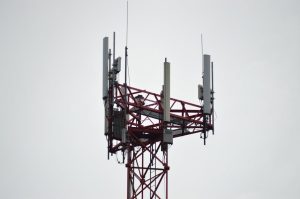
MEO Satellites: Revolutionizing Global Connectivity with Medium Earth Orbit Technology
Medium Earth Orbit (MEO) satellites are a type of satellite that operates in an orbit between 2,000 and 36,000 kilometers above the Earth’s surface. This orbit is higher than Low Earth Orbit (LEO) satellites but lower than Geostationary Orbit (GEO) satellites. MEO satellites are designed to provide a unique combination of low latency and wide coverage, making them an attractive option for a variety of applications, including telecommunications, navigation, and Earth observation.
History and Development of MEO Satellites
The concept of MEO satellites has been around for several decades, but it wasn’t until the 1990s that the first MEO satellites were launched. One of the earliest MEO satellite systems was the Iridium constellation, which was launched in 1998 and provided global coverage for satellite phone communications. Since then, several other MEO satellite systems have been launched, including the Globalstar and O3b (Other 3 Billion) constellations.
How MEO Satellites Work
MEO satellites work by transmitting and receiving data to and from Earth stations or other satellites. They are typically equipped with transponders, which are devices that receive a signal, amplify it, and then re-transmit it to its destination. MEO satellites are also equipped with antennas, which are used to transmit and receive data. The satellites are powered by solar panels and have a lifespan of around 10 to 15 years.
MEO satellites have several advantages over other types of satellites. They have a lower latency than GEO satellites, which means that data can be transmitted and received more quickly. They also have a wider coverage area than LEO satellites, which makes them more suitable for applications that require global coverage. Additionally, MEO satellites are less expensive to launch and operate than GEO satellites, which makes them a more attractive option for many applications.
Applications of MEO Satellites
MEO satellites have a wide range of applications, including telecommunications, navigation, and Earth observation. They are used to provide broadband internet access to remote and underserved areas, as well as to support satellite phone communications. They are also used for navigation, such as providing location information and timing signals for GPS and other navigation systems.
MEO satellites are also used for Earth observation, such as monitoring weather patterns, tracking climate change, and detecting natural disasters. They can also be used for surveillance and reconnaissance, such as monitoring military activity and detecting illegal activities.
Future of MEO Satellites
The future of MEO satellites looks bright, with several new constellations and systems being developed. One of the most promising new developments is the use of MEO satellites for 5G communications. Several companies, including Intelsat and SES, are planning to launch MEO satellite constellations to provide 5G coverage to remote and underserved areas.
Another area of development is the use of MEO satellites for IoT (Internet of Things) applications. MEO satellites can provide low-latency and wide-coverage connectivity for IoT devices, such as sensors and trackers. This can enable a wide range of applications, including smart cities, industrial automation, and environmental monitoring.





